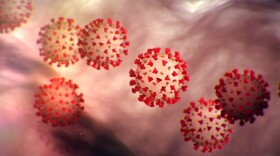Every Friday, BPR's Helen Chickering talks with NC Health News founding editor Rose Hoban. This week, on the heels of the president’s COVID-19 diagnosis, they take a brief look back in history at other presidents who have fallen ill while in office, and forward as North Carolina moves forward into Phase-3 of the governor’s coronavirus reopening plan.
HC: Okay, Rose, we've got to start this conversation with the news of the day, and that is the president. And first lady have tested positive for COVID-19.
RH: Ever since the pandemic began, I've been reading about epidemics. I've read “ The Great Influenza”. I’ve read “Pox, “Outbreaks”, “Spillover” and now I'm reading a book called “Pox Americana” which is about a smallpox epidemic that, you know, popped up and raged throughout the course of the revolutionary war. The book starts with George Washington having smallpox when he was in his late teens, early twenties.
HC: I had no idea!
RH: Yeah. Right. And there was a yellow fever epidemic that hit Philadelphia during the continental Congress. They all had to flee Philadelphia. So, I think the thing that Trump's diagnosis is just a reminder that viruses do not discriminate. They affect everyone and they've affected presidents. We still don't know what made Woodrow Wilson sick during the Treaty of Versailles negotiations at the end of World War I, but he was incapacitated for like a month – which was during the time of the Spanish Flu. Franklin D. Roosevelt, I think he was in his thirties when he had polio. So, you know, these viruses do not discriminate. I think that's the thing that occurred to me when I heard about the diagnosis.
HC: Let's shift into North Carolina, Governor Cooper this week announced, and I thought it was going to be 2.75. that the state is moving into Phase Three of his Corona virus reopening plan.
RH: So, there's bars, movie theaters, but all very limited, right? And it will allow for plenty of social distancing. There's not a lot of indoor stuff that's allowed yet. Indoor is the place where you worry most about transmission, especially as we get into the cold weather. And there is still a raging debate in the scientific community about how airborne is COVID. Is it only contained in heavy droplets, only travel about a couple of feet from you? Or can it float around more and get into your HVAC systems? So it seems that COVID is somewhere in between those two poles. We just don't know. But we do know that indoor spaces are more likely to be the types of spaces that allow for transmission.
Rose Hoban is the founder and editor of NC Health News, as well as being the state government reporter. Hoban has been a registered nurse since 1992, but transitioned to journalism after earning degrees in public health policy and journalism. She's reported on science, health, policy and research in NC since 2005. Contact: editor at northcarolinahealthnews.org




